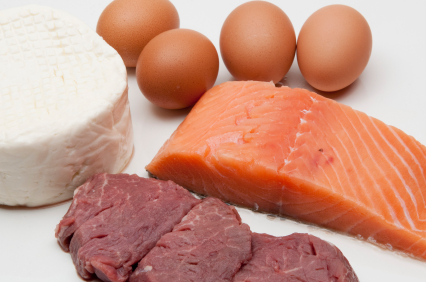It’s easy to read about what we’re “supposed to eat” but actually applying these guidelines can be more difficult. The food groups are pretty easy to remember, but how does this apply to the items you place in your shopping cart to prepare for yourself and the rest of the family? Below, we lay out some things to remember when choosing and purchasing food for you and your family:
Grains Defined
There are several terms used to describe grains – refined, enriched, fortified, or whole grain…These refer to the different processes used in processing the grain product. Refined foods have typically lost many of the nutrients they had in their natural state. Enriched grains have nutrients added back to them to make them a more nutritious choice. Fortified foods are foods that have had nutrients added to them that were not in the original product. Whole grains are as close to the original natural state of the product as you can get (without going out into the field and picking grains yourself!) The USDA recommends incorporating as many whole grains into your diet as you can. Your local grocery store may have many selections of whole grain products, including bread, noodles, and cereal.
Vegetables and Fruits
If we were to rank vegetables by their most nutritious forms, the order would be: fresh, frozen, then canned. Fresh vegetables contain the most nutrients, but frozen vegetables without added salt can be a healthy alternative. Typically, canned vegetables contain salt to help with the preservation process. This is why canned foods can be stored longer than fresh foods. Although fresh vegetables don’t keep as long, they are actually a much healthier option than buying canned goods.
An often overlooked subgroup of vegetables are legumes. Legumes are plants of the bean and pea family that contain protein and other nutrients. They are usually inexpensive and can be added to or mixed with meals to provide extra fiber and nutrients.
Fresh fruits are typically a better choice than fruit juices. Not only will whole fruits give you a feeling of fullness, they contain more fiber than their juice counterparts. Be on the lookout for juice drinks or “ades” since they usually contain more sugar than the juices themselves.
Meat, Fish, and Poultry
In order to avoid excess fat in your diet, stick to fish, poultry, and lean cuts of meat. Even “lean” ground beef has more fat than turkey or chicken. Fish such as salmon, tuna, halibut, and cod are high in omega 3 fatty acids, which are beneficial for the heart. “Round,” “loin,” and “select” cuts of beef and pork have less fat than “prime” or “choice” cuts.
In order to keep calories under control, avoid frying meats in fat when preparing them. Also, before cooking, trim the excess fat. After cooking, drain excess fat and remove the skin from poultry.
Dairy Products
Dairy choices should center around low-fat or fat free selections. Dairy products such as milk, cheese, and yogurt provide nutrients while limiting fat intake.
A Word on Personal Preference
Remember that any list of recommended foods for your diet will likely have to be tailored to your personal preference. It may be best to start with the foods you like to eat. Take these foods and then determine how you can make these choices healthier. For example, if you love to eat bread, consider replacing white bread consumption with whole grain or whole wheat bread. If you notice areas of your diet where you are lacking, try to gradually incorporate healthy items to fill the void. Are you having trouble trying to get the recommended amount of vegetables in your diet? Try adding lettuce and tomatoes to your sandwiches. Then work up to small salads and eventually you’ll get more servings of vegetables in your diet. In order to make a healthy diet plan a way of life, you must work within the constraints of your likes and dislikes. Before you know it, you’ll find yourself eating much better!
 It’s Not All About Weight…
It’s Not All About Weight…